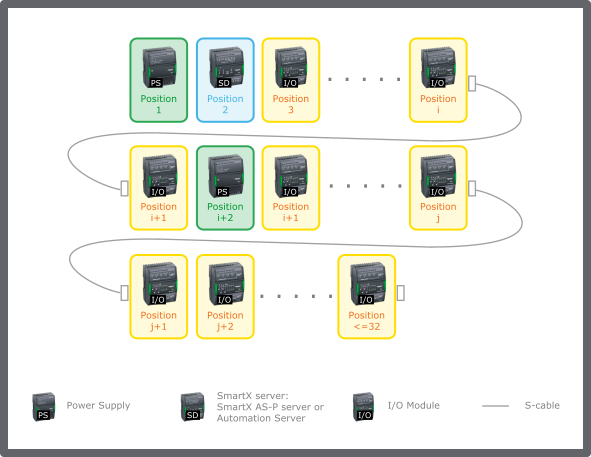
Concept
Device Addressing
Each device can detect its order in the chain of connected devices and assigns itself an address accordingly. This auto-addressing feature is provided by the terminal base backplane.
In EcoStruxure Building Operation WorkStation, you create a logical I/O module to be associated with the physical I/O module on the I/O bus. You specify the I/O module type and name. Initially, the module ID is Null, which means that the I/O module is non-operational. You assign a module ID that is equal to the address (position) of the I/O module on the I/O bus. You can configure the module ID either when you create the logical I/O module or later. When the I/O module is plugged into the system at the intended position on the bus, the EcoStruxure Building Operation software automatically associates the physical I/O module with the logical I/O module that has a matching module ID and type.
The backplane generates a 5-bit address corresponding to the order (position) of the terminal base in the chain and passes this address through the I/O bus to the electronics module installed on the terminal base (base plate). For more information, see Backplane Board .
The leftmost device in the chain gets the address (position) 1. The next device gets the address 2, and so on, up to 32.

Position 1 is reserved for a power supply. Position 2 is reserved for a SmartX AS-P server or Automation Server. Although the power supply device gets an address, the PS-24V does not use it. For more information, see I/O Bus Restrictions .
When you replace an electronics module, the new module automatically picks up the same address. If you remove an electronics module from its terminal base, the addresses of the following devices are not affected.
 Hardware Overview
Hardware Overview
 Terminal Bases
Terminal Bases
 Backplane Board
Backplane Board
 I/O Bus Restrictions
I/O Bus Restrictions